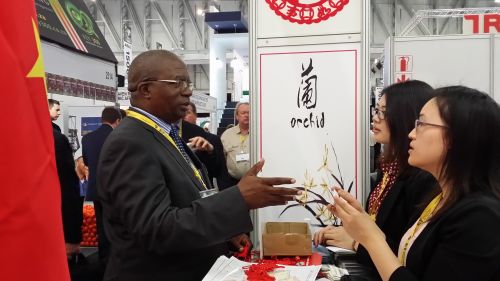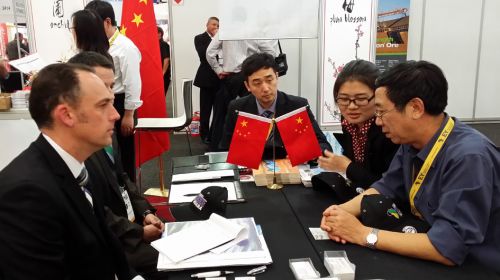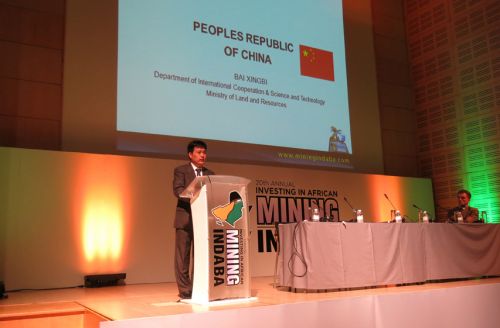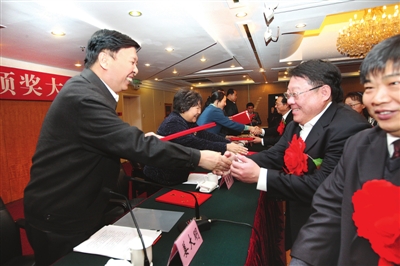2013 review and 2014 outlook of China coal industry development
Source:www.mlr.gov.cn Citation: www.chinamining.com.cn Date: Jan.20, 2014
There is no doubt that it was very hard for China`s coal industry in 2013.
In 2013, coal market price experienced "drop". Although it showed a slight rise a few months before the end of the year, it still faced the reality of “crash”.
At the same time, the year 2013 was an important year for the coal line to experience the deepening of marketing reform in our country.
This year, the general office of state council implemented fully “the Guidance on Deepening the Marketing Reform of Electricity and Coal,” cancelled the key contracts, and realized the price incorporation of electricity and coal. The examination and approval system reform of state administration meant that coal production license and coal business license were canceled and it was easy to operate coal business, which stimulated the market dynamics.
How to make the whole society have an in-depth understanding of the coal industry development and the difficulties and problems in the coal industry? On January 15, China Coal Industry Association held a press conference in Beijing. During the conference, 2013 national economic operation, reform and development of the coal industry were introduced. Meanwhile, coal development environment and the future development of coal industry were analyzed.
Liang Jiakun, vice-chairman and secretary-general of the Association, said that "China Coal Industry Association is the participant, promoter and builder of the reform and development of coal industry, shouldering the important mission. I also hope that all parties can pay more attention to the development of coal industry."
At this meeting, China Coal Industry Association issued “on the reform and development of China`s coal industry in 2013”. Relevant experts made analysis and forecast of coal.
Enough supply and structural surplus unchanged
Enough supply and structural surplus were still the general situation of national coal market in 2013.
According to Jiang Zhimin, vice-chair of Association and spokesman, in 2013 the national coal output increased slightly, and consumption began to fall with the shipment rebound, high inventories and the continual increase of net import.
According to the association’s preliminary statistics, in 2013, the national coal output was 3.7 billion tons with annual average output decrease from over 200 million tons for 10 consecutive years to 50 million tons the first time. The national coal consumption was 3.61 billion tons with annual average consumption decrease from 9% for 10 consecutive years to 2.6%. The rail shipment of coal throughout the year was 2.32 billion tons, 58.1 million tons and 2.6% increase over last year. The imported coal reached 327 million tons. The exported coal reached 7.51 million tons. The net imports of coal were 320 million tons, 40 million tons more than in 2012. By of the end of December 2013, the stored coal of coal companies reached 84 million tons, 700000 tons over last year.
Coal price decline was another feature in 2013. According to statistics, the national coal price began to recover slightly since December after a sharp drop. According to China`s coal price index (the national comprehensive index) change, price index dropped from 170.7 at the beginning of the year to 157.8 at the end of September (low point), with slight rebound since early October. On December 27, it reached 161.8, 4 points increase than the end of September (low point), 8.9 points lower than the beginning of the year and 41.2 points lower than the high point of 2011.
The economic benefits of coal industry fell dramatically with business loss expansion, and the majority of the old mining areas experienced difficulties because of multiple factors such as coal market demand decline, output surplus, expansion of imported coal, tax burden and the heavy historical burden.
According to statistics, for the first 11 months, coal enterprises’ main business costs rose by 4.56% over last year. For the large-scale coal enterprises, main business costs rose by 21.1% with industry profits decrease by 38.8% (enterprise loss was 40.554 billion Yuan, 80.70% increase over last year). The profits of large-scale enterprises fell by 37.03% (33 loss-suffering enterprises, 36.7% of the total, 16.7% increase over last year).
Industrial structure optimization, concentration increasing
Compared with coal market situation, coal industrial restructuring made significant achievements.
First, it was the continuous optimization of production structure. Figures showed that in 2013, the coal mine number was 12,000, 13000 less than that in 2005. Among them, the large-scale coal mines with the annual output of 1.2 million tons reached more than 850, 560 more than those in 2005. The proportion of total output increased from 35.7% to 65%. There were more than 300000 small coal mines under the annual output of 300000 tons, 10000 less than those in 2005. The proportion of total output dropped from 30% to 16%.
At the same time, large-scale coal base construction was in steady progress. According to preliminary estimate, the output of 14 major coal bases reached 3.4 billion tons, accounting for 92% of the total national output, 2% increase. Preliminary analysis forecast showed that the output of nine provinces and autonomous regions such as Inner Mongolia, Shaanxi, Shanxi, Guizhou, Henan, Anhui, Shandong, Xinjiang, Yunnan exceeded one hundred million tons, accounting for about 83% of the country`s total output, 2% increase. The raw coal output of other five provinces like Hebei, Ningxia, Heilongjiang, Hunan, Liaoning, reached more than 50 million tons, accounting for about 10% of the country`s total output.
At the same time, large coal enterprises continued to maintain the rapid development. Preliminary statistical analysis showed that the raw coal output of eight enterprises such as Shenhua, Jining Coal Industry and Mining, Datong Coal Industry Group Company, Shandong Energy, Jizhong Energy Resources Co.Ltd., shaanxi Coal and Chemical Industry, Henan Energy, Shanxi Coking Coal Group accounting for 37% of the total. The output of 11 companies like Kailuan, LuAn, Yankuang, Huaneng, Yangquan, CLP Group, Huainan, Jincheng would reach more than 50 million tons, accounting for about 19% of the total. There were 52 coal companies, whose output production surpassed more than 10 million tons, accounting for about 70% of the total output. There were 324 coal mines run by 17 state-owned enterprises with output of 980 million tons, accounting for 26.5% of the total.
The production concentration of coal enterprises were improved continuously. According to statistics, the production output of the top four coal enterprises accounted for about 25% of the total, 2.5% increase over last year. The production output of the top 10 coal enterprises accounted for 40%, 6% increase last year.
Positive progress was made in coal enterprise merger and reorganization. Statistics showed that in 2013, the total closed coal mines were more than 770.
Over 190 coal mines were improved with 610 coal mines’ merger and reorganization. More than 200 million tons of backward production facilities were closed down.
Industrial convergence development also speeded up the pace. According to the preliminary analysis of China coal industry association, the national rights and interests of equity participation was expected to account for 11% of the total, 15% of the thermal power installed capacity. The national kerosene output was about 1.47 million tons. Coal gasification was 2.7 billion cubic meters. Olefin output made by coal was 1.68 million tons. Glycol capacity was up to 900000 tons, with 32 million tons of coal turned.
Coal demand will continue to maintain a slight increase this year
At this meeting, Jiang Zhimin forecasted the coal market of 2014. According to him, in 2014 the national coal market demand will continue to maintain a small increase. The national coal supply capacity is estimated to be 4 billion tons, and annual output will be around 3.8 billion tons, with 2.7% increase. The annual net imports will be about 300 million tons.
Jiang Zhimin said, "Because the national efforts will be increased to control atmospheric pollution, the main coal consumption areas such as Beijing Tianjin, Hebei, Yangtze River delta and the Pearl River delta will be reined in demand. But the maturity of alternative energy technology and economic feasibility need further improvement."
According to Jiang Zhimin, with the increasing pressure on energy conservation and environmental protection, clean energy impact, the pressure is still large once the early formation of the large domestic coal production capacity is released. So the coal output will show a slight increase. Though the country will take measures to strengthen coal quality management and restrict the use and import of inferior coal, the pressure of excess capacity still exists. China`s coal imports will remain relatively large scale because of the price gap between domestic and imported coal, exchange rate changes, currency devaluation of coal exporters such as Indonesia and Australia.
“The situation of enough supply and structural surplus will not change. But it may happen that individual coal will be in short supply. “According to Jiang Zhimin, during the first half of 2004, the situation of enough supply and structural surplus will not change, and total inventories remain high. Enterprises are faced with great difficulties and risks. During the second half of this year, the supply and demand situation will become balanced. Industrial economy will recover slightly, but it is stills faced many unstable and uncertain factors. The economic pressure is still there
According to Jiang zhimin, coal will remain world’s important energy and China’s major energy for the medium and long-term development trend of coal industry.
He said at the same time, the coal industry development was still faced with the problems such as coal production and consumption rough , the ecological environment constraints, the contradictions between long-term productivity advance and long-term shortage. The coal industry and enterprises would have a tough task.
Tax reform may be issued this year
Tax reform is the subject of media attention. China coal industry association also has responded.
Zhang Hong, deputy secretary-general of China Coal Industry Association, and director of the policy research department mentioned that a reasonable tax structure should be set after the collection of coal taxes. At the same time, standard fees should be set and all kinds of unreasonable administrative charges should be cancelled in particular. Coal tax reform should be promoted without increasing taxes.
According to his introduction, the current coal enterprises pay high taxes. The taxed account for 35.04 of the sales cost of. Among them, the taxes account for 21.03% of the sales revenue. All kinds of administrative charges accounts for 14.01% of sales revenue. 16 of the 19 taxes will be paid by coal enterprises.
According to Jiang Zhimin, the relevant state departments have made a clear requirement for coal tax reform. The specific scheme has already been drawn up. Because it belongs to local taxes, specific amount will be set by the local government.
Jiang Zhimin said, "The amount of taxes does not mean that big provinces will pay more and small provinces less. As to the specific range, it is now being studied and is likely to be launched this year." He also said that the reform of resource taxes and “clean-up fees” would be conducted together.
Pay attention to “safety and health”
Compared with the downturn of the coal market, we can see that the safety of coal production in our country shows stable and better performance. According to the China coal industry association, in 2013, the total number of coal mine accidents was 604. 1067 people were dead or missing, 22.5% and 22.9% decrease respectively compared with last year. Major accident fell by 35.2% and 36.2% respectively and serious and major accidents fell by 12.5% and 10.3% respectively. The death rate of coal mine with or over one million tons dropped to 0.288, 23% decrease compared with last year.
The reporter showed that in 2012, the death rate of coal mines with or over one million tons was 0.374. 33.7% decrease compared with 2011, which was the first time since the development of China`s coal industry to drop within 0.5. For the first time, the number of the dead and missing was less than 1500. In the long run, the death rate of coal mines with or over one million tons declined year by year. In 1989 it was 7.07. In 2001, it was 5.03. In 2005, it was 2.81. In 2009, it was 0.892, the first time below 1. In 2011, it was 0.564, the first time below 2000 people.
Jiang Zhimin said, "Coal industry establishes firmly a ‘safety first, life first’ philosophy. Conduct large production safety inspection. Crack down on illegal production and operating activities and govern according to law. Implement the ‘double seven’. Speed up the revised ‘coal mine safety regulations’. Strengthen the management of coal mine technology standards and promote the safety of coal mine."
He said, the coal industry should pay more attention to the reduction of production safety accidents, increase the degree of occupational health protection. Meanwhile, under the upturn of coal mine safety, investment should be made to improve the coal mine production environment. Coal mine occupational disease should also be prevented to increase the degree of occupational health and security. (Zhang Li) (translated by TLRHVC)
About CHINA MINING
Since first held in 1999, the scope and influence of CHINA MINING has grown rapidly year by year. As a global mining summit forum and exhibition, CHINA MINING Congress and Expo has become one of the world’s top mining events, and one of the world’s largest mining exploration, development and trading platforms, covering all aspects of the whole mining industry chain, including geological survey, exploration and development, mining rights trading, mining investment and financing, smelting and processing, mining techniques and equipment, mining services, etc. playing an active promotion role in creating exchange opportunities and enhancing mutual cooperation between domestic and foreign mining enterprises.
CHINA MINING Congress and Expo 2014 will be held at Meijiang Convention and Exhibition Center in Tianjin on October 20-23, 2014. We invite you to join the event and to celebrate the 16th anniversary of CHINA MINING with us. For more information about CHINA MINING 2014, please visit: m.balanzskin.com.









